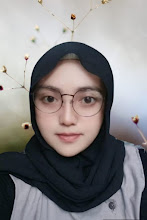
Their own acne is a common problem experienced by nearly 80% 5% teens & adults. Although there are some people who recover from acne without any permanent effects, but there are also a growing worry about the presence of acne scars. While there are some products that applied to the skin to help improve mild acne scars, acne scars, but is usually handled through a combination of surgical procedures or improving the skin layer.
types of acne scars
Acne is very disturbing because it is usually very difficult to remove pimples, acne can even interfere with our 2 times. The first acne annoying because it makes skin look perfect is not, then the second even though acne has been cured but can leave scars that will look for life, became a kind reminder of his presence.
Here are some types of acne scars that are common:

- Type of injury Icepick
These types of injuries are usually narrow and deep skin prick like he'd been stabbed by the ice. This type of wound size <2 mm with a depth of injury reach the dermis or subcutaneous layer. These types of injuries are usually too deep to be dealt with through the process of dermabrasion or laser resurfacing. - Type of injury Boxcar
This type of injury usually have a round base that injured or oval with sharply angled surface parts. Unlike other types of wounds Icepick, type of injuries Boxcar usually not tapered at the base. Scar shallow with a depth of between 0.1 -0.5 mm can be handled through the technique of skin resurfacing , while a deeper scar> 0.5 mm requires a more thorough technique. - Type of injury Rolling
This type of injury caused by attraction between the layers of skin with the deeper parts of the skin resulting in skin that looks bumpy effect. - Type of injury hipertropik / keloid
Hipertropik wounds are wounds where the wound surface seen to rise above the original scar and can be shrunk back over time. But for the keloid itself is wound tissue growth in areas that exceed the wound, the scar itself looks elastic, solid and sometimes cause itching.
There are several procedures that can be used to improve acne scars, and each procedure has advantages and risks of each. Sometimes too few procedures are combined to obtain maximum results.
Here are some procedures that can be used for the treatment of acne scars:
- Laser resurfacing
This procedure is usually performed by a skin specialist / dermatologist by removing the damaged upper layers of skin and tightens the middle layer of skin so that skin can be smooth. To eliminate the pain, the doctor usually will first give a local anesthetic. Skin usually takes 3-10 days to recover. - Dermabrasion
Another way that is used is to use a soft wire brush or tool that uses diamonds to erode the surface of the skin. At the time of the skin to recover, then the more subtle layers that will replace the layer of skin that had been eroded. It takes much longer for skin to recover from this procedure, usually between 10 days to 3 weeks. - Laser therapy
The procedure uses fractional laser therapy works the deeper layer of skin than laser resurfacing or dermabrasion. And because this treatment does not make the cut on the top layer of skin, then the recovery time becomes faster but the cost of treatment is indeed more expensive than the above procedure. - Dermal fillers
Sometimes the doctor will inject a certain material that can fill these holes so that the wounds that look more flat and smooth. Injected substance that is fat, cow collagen, human collagen, hyaluronic acid derivatives, etc.. This injection is usually not permanent, so that the necessary subsequent injections.
In addition to the above procedures there are also some minor surgery procedures that can be done for this type of deeper cuts such as: Punch Excision, Punch Excision with Skin Graft Replacement, Punch Elevation or subcutaneous incision.
If acne or acne scars make you worry, do not hesitate to consult a skin specialist / dermatologist to get a variety of treatments that can help eliminate acne or acne scars. Dermatologist can also provide information on various types of therapies that can be done as well as tips on how to care for skin that is true according to your skin condition.

0 komentar:
Posting Komentar